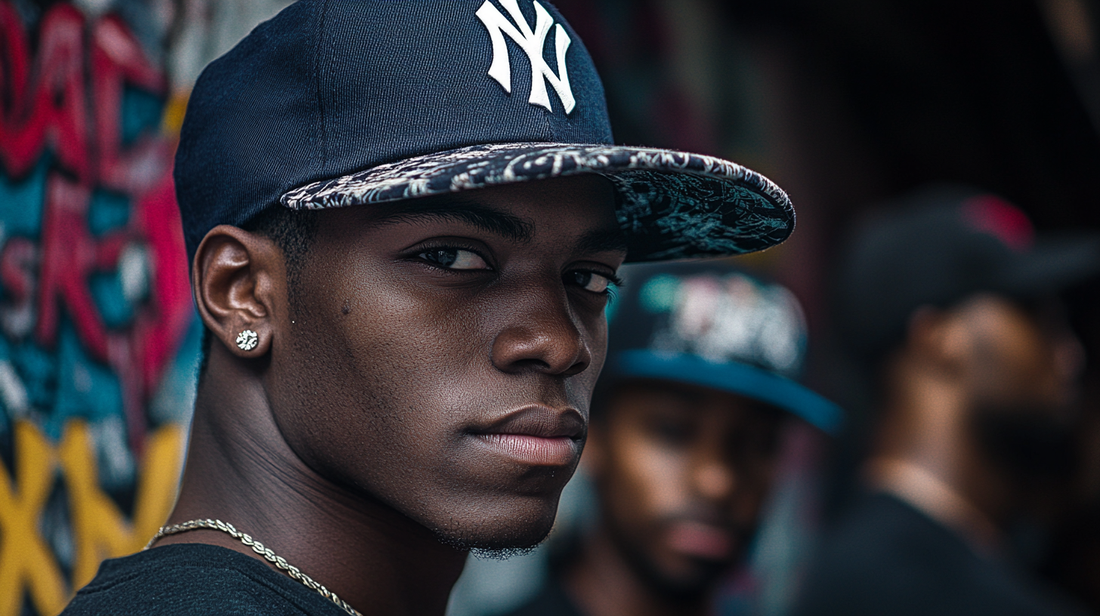
MLB Hats Worn by Hip-Hop Legends
Share
It was 1996, and I was standing in line at Jimmy Jazz in Brooklyn when Jay-Z walked in rocking a pristine navy New York Yankees fitted. That moment crystallized something I'd been witnessing on the streets - how the MLB 59Fifty fitted had transcended baseball to become a cornerstone of hip-hop fashion. Today, as I curate collections and write about street culture, that memory remains a powerful reminder of how these caps helped shape our culture.
The Birth of Hip-Hop's Love Affair with MLB Fitteds
The relationship between hip-hop and MLB fitted hats dates back to the early 1980s. What started with Run-DMC's affinity for the Chicago White Sox caps evolved into a full-blown cultural phenomenon. The fitted cap became more than just team merchandise - it transformed into a symbol of street credibility and urban authenticity.
Game-Changing Moments in Hip-Hop Hat History
Dr. Dre's consistent wearing of the Los Angeles Angels cap throughout the early '90s set a precedent for regional pride through headwear. Meanwhile, Nas's loyalty to the Yankees fitted helped cement the cap's status as a New York hip-hop uniform.
Cultural Impact and Style Evolution
The influence of hip-hop artists on MLB fitted culture can be broken down into several key aspects:
- Regional Identity: Artists often represented their cities through team choices
- Color Coordination: Matching caps with outfits became an art form
- Brand Evolution: New Era adapted designs based on hip-hop influence
- Global Reach: International artists adopted the style, spreading it worldwide
Notable Artist Collections and Influences
50 Cent's extensive collection of White Sox fitteds in various colorways showed how one team's cap could become a personal brand statement. Check out our guide on hip-hop legends and their MLB hat choices for more inspiration.
Styling Tips from the Streets
Based on decades of observation and personal experience, here are key ways to style your fitted:
- Keep the sticker on for that fresh-off-the-shelf look
- Consider the cap's colorway in relation to your entire outfit
- Master the perfect bend in the brim
- Find your perfect size using our fitted hat size calculator
Pros and Cons of the Hip-Hop Fitted Culture
Pros:
- Creates lasting fashion statements
- Builds bridges between sports and music cultures
- Offers versatile styling options
- Preserves authenticity in street fashion
Cons:
- Can be expensive to maintain a collection
- Some colorways become too mainstream
- Risk of counterfeits in the market
- Storage challenges for serious collectors
Modern Era and Future Trends
Today's artists continue to innovate with fitted cap style. Travis Scott's preference for Houston Astros gear shows how regional pride remains relevant, while artists like Tyler, The Creator experiment with unexpected team choices and creative styling.
Collecting and Investment Potential
The intersection of hip-hop and MLB fitteds has created a vibrant collector's market. Limited editions and artist collaborations often appreciate in value, making them both fashion statements and potential investments. For more insights, visit our fashion collaborations guide.
Authenticity and Cultural Appreciation
It's crucial to acknowledge how hip-hop transformed MLB fitteds from mere sports merchandise into cultural artifacts. This evolution represents the culture's power to reimagine and repurpose mainstream items into something uniquely its own.
Conclusion
The relationship between hip-hop and MLB fitted caps represents one of the most significant fashion crossovers in modern culture. From Jay-Z's Yankees fitted to current artists creating their own unique styles, these caps remain a crucial element of hip-hop fashion. As we look to the future, the fitted cap's role in hip-hop culture continues to evolve while maintaining its status as an essential piece of street fashion history.